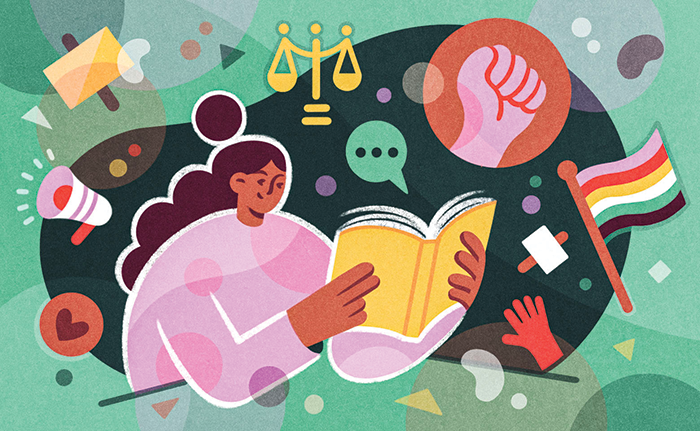Q: Why did you change your name?
Editor’s Note:
While some in our community may be already aware of our new name, we wanted to share with all our readers why we’ve changed from Teaching Tolerance to Learning for Justice.
Thirty years ago, Teaching Tolerance was founded by the Southern Poverty Law Center with a specific goal: eradicating hate by fighting intolerance in schools.
Celebrating diversity was key then. Knowing the difference one teacher could make, we offered resources for creating classrooms where all children could thrive.
Yet, even we have admitted that “tolerance” wasn’t enough. We justified our name by applying the term broadly, saying no single word captured the range of solutions needed to create an equal society. We’re proud of the work we’ve done. But our approach and work have evolved. So have our goals.
Justice is the heart of what we want for our young people and for society at large.
We’ve expanded our focus. Our Social Justice Standards bolstered our celebration of identity and diversity with attention to questions of justice and strategies for student and collective action.
We now work with a community of classroom teachers, administrators, counselors, librarians, support staff, teacher educators and more. We’re making moves to start working with caregivers and communities, too.
We also know that the health of our society largely depends on the state of things in the South where, along with the rest of the Southern Poverty Law Center, we are becoming more deliberate about our work.
With blatant white supremacy and ongoing racial injustice on display, we’re fighting harder for real democracy and justice.
We’re building on the work we do alongside educators teaching the hard history of American slavery; promoting policies that ensure queer students are safe on campus; and navigating critical conversations with young people about race, gender and class. We’re advocating for sanctuary schools where students and their families needn’t fear deportation. We’re offering guidance to interrupt a school-to-prison pipeline that disproportionately affects Black, Latinx and Indigenous students and their communities.
In essence, tolerance is neither justice nor a sufficient description of the work we do or the world we want.
With our new name, we were thinking of how best to make the changes we want to see in schools. We’re shifting from “teaching” to “learning” as we recognize that we don’t have all the answers.
We are learning alongside you to work for changes that students, families, educators and districts need to make schools places where all students thrive. We are in this work together to honor this truth: Learning from—and with—one another is the first step to making justice real.
We’re grateful for our community that has supported, encouraged and pushed us to find a name that better reflects what we do.
We hope you’re as excited as we are about our new name and the incredible work we’ll do as we continue learning for justice together.


0 COMMENTS